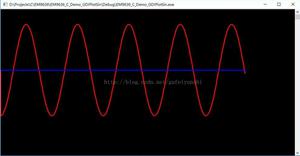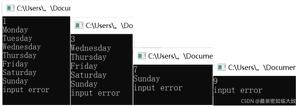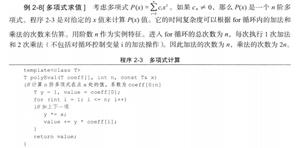用C ++程序查找矩阵的转置
矩阵是数字的矩形阵列,以行和列的形式排列。矩阵的转置是一个新的矩阵,其中原始行现在是列,反之亦然。例如。
矩阵如下-
1 2 34 5 6
7 8 9
上述矩阵的转置如下。
1 4 72 5 8
3 6 9
查找矩阵转置的程序如下-
示例
#include<iostream<using namespace std;
int main() {
int transpose[10][10], r=3, c=2, i, j;
int a[3][3] = { {1, 2} , {3, 4} , {5, 6} };
cout<<"矩阵为:"<<endl;
for(i=0; i<r; ++i) {
for(j=0; j<c; ++j)
cout<<a[i][j]<<" ";
cout<<endl;
}
cout<<endl;
for(i=0; i<r; ++i)
for(j=0; j<c; ++j) {
transpose[j][i] = a[i][j];
}
cout<<"The transpose of 矩阵为:"<<endl;
for(i=0; i<c; ++i) {
for(j=0; j<r; ++j)
cout<<transpose[i][j]<<" ";
cout<<endl;
}
return 0;
}
输出结果
矩阵为:1 2
3 4
5 6
The transpose of 矩阵为:
1 3 5
2 4 6
在上面的程序中,矩阵被初始化。然后显示其值。在下面的代码片段中显示了这一点。
int a[3][3] = { {1, 2} , {3, 4} , {5, 6} };cout<<"矩阵为:"<<endl;
for(i=0; i<r; ++i) {
for(j=0; j<c; ++j)
cout<<a[i][j]<<" ";
cout<<endl;
}
矩阵的转置使用嵌套的for循环计算。给出如下。
for(i=0; i<r; ++i)for(j=0; j<c; ++j) {
transpose[j][i] = a[i][j];
}
最后,获得转置并将其打印在屏幕上。这是通过以下代码片段完成的。
cout<<"The transpose of 矩阵为:"<<endl;for(i=0; i<c; ++i) {
for(j=0; j<r; ++j)
cout<<transpose[i][j]<<" ";
cout<<endl;
}
以上是 用C ++程序查找矩阵的转置 的全部内容, 来源链接: utcz.com/z/316488.html









